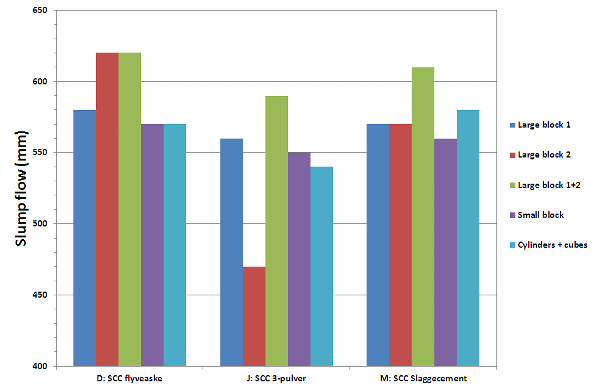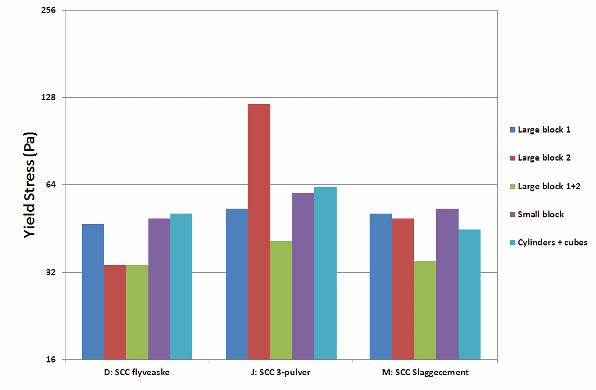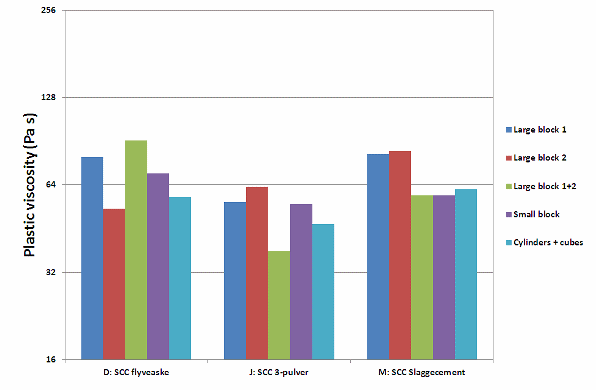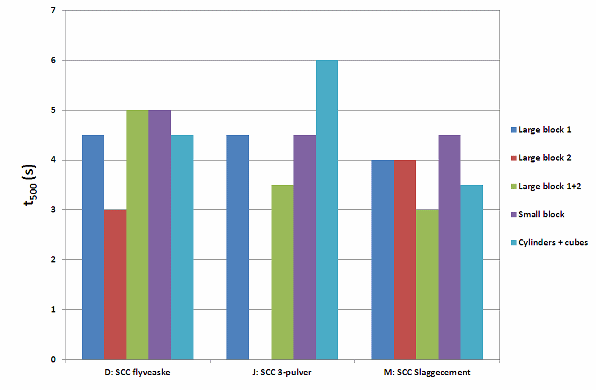The measured slump flow (4C-Rheometer) of the three self-compacting concrete types is shown below. All three SCCs and particularly Mix J exhibited a tendency to a continued increase in fluidity with time after completion of the mixing sequence.
Seven out of nine castings were completed with slump flows within the target range of 580 ± 30 mm, while one casting was performed with a slump flow of 620 mm and another at 540 mm.

The measured yield stress (4C-Rheometer) of the three self-compacting concrete types is shown below. The measured values range from 34 to 63 Pa except for one measurement at 122 Pa (the low slump flow batch of Mix J).

The measured plastic viscosity (4C-Rheometer) of the three self-compacting concrete types is shown below. The measured values range from 38 to 91 Pa∙s. As such the three SCCs all have rather similar plastic viscosities that fall within the medium plastic viscosity range according to the Danish “Guidelines for execution of SCC”.

The measured t500 (4C-Rheometer) of the three self-compacting concrete types is shown below. The measured values range from 3 to 6 seconds, i.e. they all correspond to viscosity class VS2 according to EN 206-9:2009. No value was recorded for the Mix J “Large block 2” batch as the slump flow was less than 500 mm.


